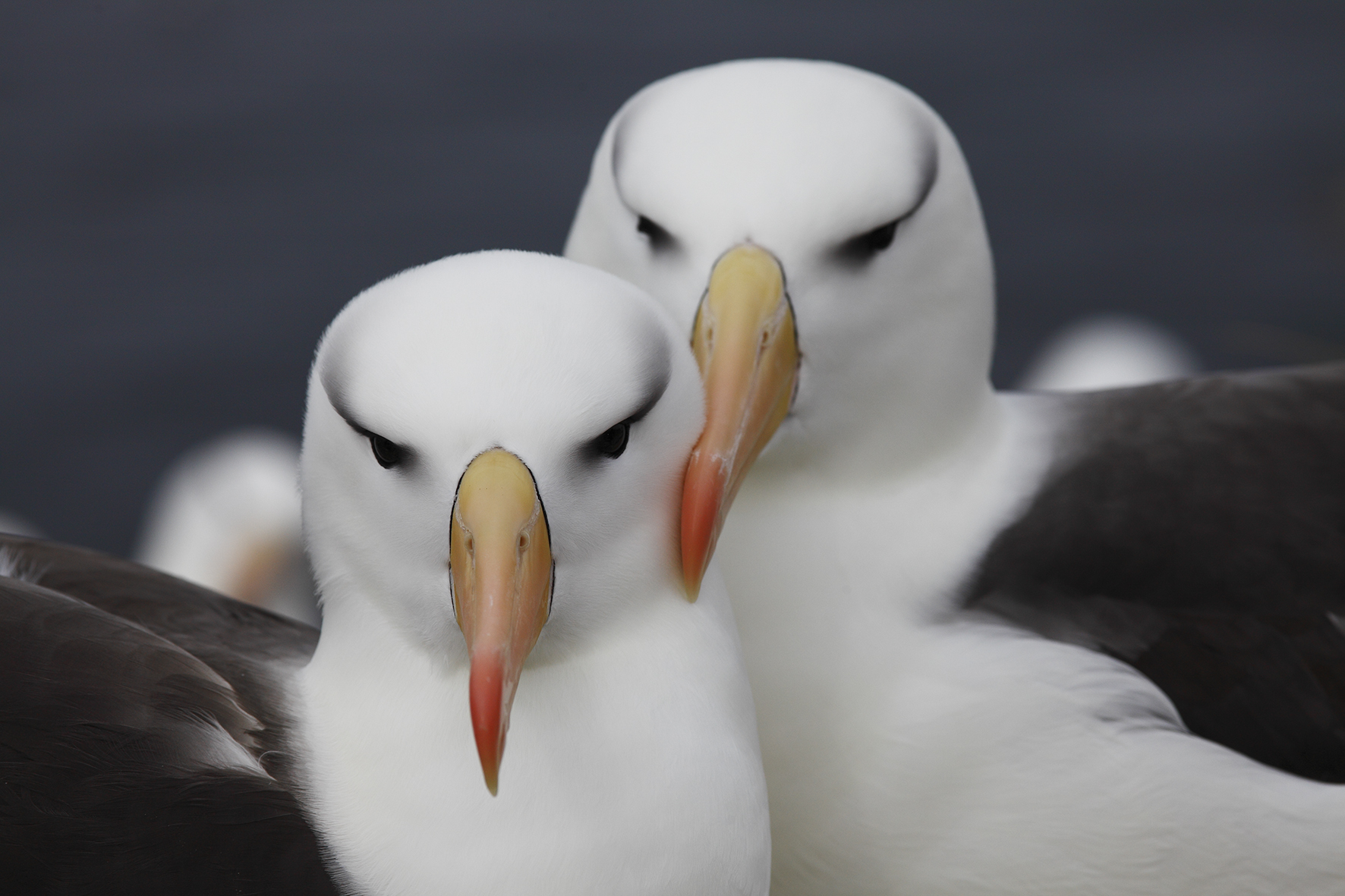
Testing positive: Black-browed Albatrosses breeding on New Island in the South Atlantic, photograph by Ian Strange
Ashley Banyard (Department of Virology, Animal and Plant Health Agency, Addlestone, Surrey, UK) and many colleagues have published open access in the journal Nature Communications on the arrival of avian influenza virus on sub-Antarctic islands and on the Antarctic Continent. ACAP-listed species affected include Black-browed Albatross Thalassarche melanophris and the Southern Giant Petrel Macronectes giganteus
The paper’s abstract follows:
“Until recent events, the Antarctic was the only major geographical region in which high pathogenicity avian influenza virus (HPAIV) had never previously been detected. Here we report on the detection of clade 2.3.4.4b H5N1 HPAIV in the Antarctic and sub-Antarctic regions of South Georgia and the Falkland Islands, respectively. We initially detected H5N1 HPAIV in samples collected from brown skuas at Bird Island, South Georgia on 8th October 2023. Since this detection, mortalities were observed in several avian and mammalian species at multiple sites across South Georgia. Subsequent testing confirmed H5N1 HPAIV across several sampling locations in multiple avian species and two seal species. Simultaneously, we also confirmed H5N1 HPAIV in southern fulmar and black-browed albatross in the Falkland Islands v Genetic assessment of the virus indicates spread from South America, likely through movement of migratory birds. Critically, genetic assessment of sequences from mammalian species demonstrates no increased risk to human populations above that observed in other instances of mammalian infections globally. Here we describe the detection, species impact and genetic composition of the virus and propose both introductory routes and potential long-term impact on avian and mammalian species across the Antarctic region. We also speculate on the threat to specific populations following recent reports in the area.”
Wandering Albatrosses Diomedea exulans in the South Atlantic have also succumbed to the influenza, as previously reported in ACAP Latest News.
Reference:
Banyard, A.C., Bennison, A., Byrne, A.M.P. et al. 2024. Detection and spread of high pathogenicity avian influenza virus H5N1 in the Antarctic Region. Nature Communications 15, 7433. doi.org/10.1038/s41467-024-51490-8.
23 September 2024

 Français
Français  English
English  Español
Español